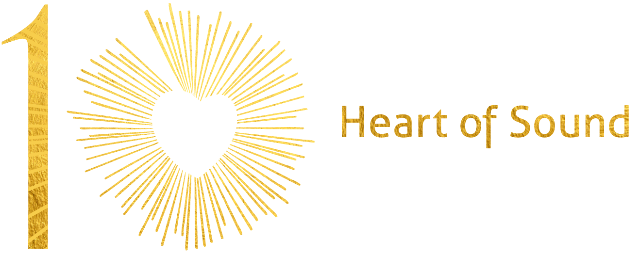3 Easy Steps to Better Sanskrit Mantra Pronunciation

If you don't know what you don't know, how can you learn?
This list is far from exhaustive, but can point you in the direction of learning more about mantras and their beautiful Sanskrit sounds. Since mispronunciation of mantra is widespread, the first step for most yogāsana teachers, mantra lovers, and kīrtan leaders is to learn where our own blind spots are.
I LOVE helping people learn Sanskrit pronunciation - not because I want to be the "Sanskrit Police" but because I want mantra lovers, sound healers, people offering sound bath trainings, and folks learning to lead kirtan chants to ENJOY the full vibratory power of the sounds as they were intended!
Trust me, it'll light your mantra chanting on 🔥 in the very best way possible!
You can of course learn Sanskrit mantra pronunciation easily in our very thorough Sacred Sanskrit Sounds course or our Sanskrit Mantra 101 introduction course, but I'd also love it if you'd contact me if you have a great resource to add here!
3 Easy Steps to Better Sanskrit Pronunciation:
1. Here is the least you need to know in 7 minutes…
Here's the link to the Sanskrit Mantra: The Least you Need to Know video, in case the embed code doesn't work.
https://youtu.be/dgvN7e6cT_E
2. Next, be sure the mantras you’re learning fit these criteria:
When you’re looking for books, websites, or youtubes to learn mantra, look for ones that have:
a) the Devanāgarī, and/or
b) dots under and above the letters, as well as long lines above the vowels.
This indicates the tongue positions and the duration of the syllable. Without those marks, you won’t be able to learn proper pronunciation, and chances are good the person sharing the information might not know it themselves. (Exceptions might include mantras of just a few syllables.)
They’re much harder to find, and not all mantras have them, but if you can, also get mantras with:
c) the little vertical lines above, and horizontal lines underneath the syllables, as these indicate the “svara” or pitch changes in Vedic chanting. This is important if you want to chant the mantra melodies in their traditional form as well.
Unless your mantra reference material has the dots/lines, you will not be able to pronounce it correctly!
(And most Yoga Teacher Training manuals don't, for instance!)
3. Learn to pronounce the Sanskrit alphabet, preferably with someone who had to learn it as an adult. (It's very difficult to teach something you never had to learn!)
Why is it important to learn from someone who had to learn?
a) If your teacher was raised speaking a Sanskrit-derived language (like Hindī, for instance), they never had to make an effort to distinguish the 5 unique mouth positions.
b) Chances are their teaching method will be call and response.
c) If your teacher doesn't show you where and how to make each sound using your mouth, tongue, and breathing apparatus, it is next to impossible for you to "get it" from hearing their voice alone.
Trust me! I lived in India on and off for 13 years and no one told me! My Indian Sanskrit teachers just chanted louder, and I responded the same way I had been doing, because that's all I could hear. They must have thought I was stupid?! LOL. Eventually they gave up! It wasn't until I had a teacher show me the mouth positions and teach me how to make the sounds that I could even HEAR what my Indian teachers were trying to demonstrate. Once I got that, everything clicked! Thank goodness.
The much more efficient, easy way to learn Sanskrit pronunciation is to have a teacher who had to learn, can break down the steps in a methodical way, and help you where you are! (Repeating the same sounds over and over does no good if you can't hear/feel where they're being made in your own body.)
You can find some free Sanskrit introductions on youtube, including on our Learn Sanskrit Mantra Online playlist but if you're truly a mantra lover and want to be sure that your tuning is accurate, it's essential to be able to go over your sanskrit pronuncation training one-on-one.
That's why I became somewhat of a Sanskrit sounds evangelist... it's my passion to tune people into the mystical, embodied, juicy sounds because they will BLOW YOUR MIND.
Our Sacred Sanskrit Sounds course online, we offer unlimited office hours support to get feedback on your alphabet chanting, go over the mantras you know and love, etc. I teach the alphabet through the Tantrik lens, which also connects the letters to the chakra sounds (actually spelled cakra in IAST), the elements of creation, and maps to points on the body. It's super cool stuff. :)
More good stuff:
Here’s a handy link to the most-used transliteration table (IAST), until you memorize the marks as they correlate to the tongue placements:
http://en.wikipedia.org/wiki/IAST
A nice collection of Sanskrit beginner articles:
Includes “how to type Sanskrit easily” for PC
http://www.scribd.com/collections/3546310/Sanskrit-materials
Please read more about “Why Sanskrit?” and “How Important is Pronunciation?”
in the free beginners mantra e-book, available on our Courses page!
Check out this Sanskrit Resources List for even more self-study information.
Remember, there's no shame in not knowing what you didn't know before... but now that you DO know that the way you were taught is not as precise as it could have been, perhaps you'll join us in raising the standard bar? When heart, thought, word, and deed come into harmony... our devotion, intention, sound of the mantra, and its reverberation into the world around us can resound most gloriously!
Auṁ Śāntiḥ Śāntiḥ Śāntiḥ


